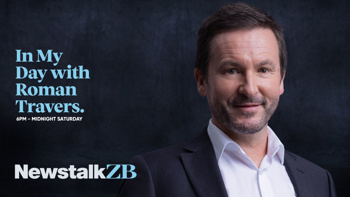The Government is putting $30 million towards free and timely access to radiology services including X-rays, CT scans and ultrasounds across New Zealand.
Health Minister Shane Reti made the announcement this morning during a visit to Waikanae Health Centre.
”At the moment, some New Zealanders are having to wait weeks or months to see a hospital specialist who then refers them to radiology services, where they may wait even longer,” Reti said.
New Zealanders will be able to get earlier diagnosis with primary health providers being able to refer patients, rather than waiting for a specialist, he said.
 Health Minister Shane Reti speaks to media at the Waikanae Health Centre. Photo / Mark Mitchell
Health Minister Shane Reti speaks to media at the Waikanae Health Centre. Photo / Mark Mitchell
Services will be delivered across both public hospitals, where available, and private radiology providers.
”Currently, access to radiology for GPs varies according to previous district health board rules. This means that, for instance, people living in the Hutt Valley don’t get the same access to radiology available to people living in Wellington,” Reti said.
”This investment will remove co-payments on X-ray, CT scans and diagnostic ultrasound, whilst also enabling primary health providers to refer patients directly where clinically appropriate.
“The first investment will be in Wellington and the Hutt Valley, where we are equalising access to radiology by investing $2.6 million annually to reduce co-payments and recognise increases in imaging numbers as the population becomes older and more complex.
“This will then be followed by other districts with poor access to radiology services.”
Reti said one of the Government’s core priorities is “building a health system that is more efficient”.
He said better access to diagnostic imaging will help bring health services closer to communities.
“This development responds to a call from GPs for more consistent access to radiology.”
Currently, Reti said someone with Gallstones for example would have to be referred to a hospital for a scan and then referred to a specialist.
Reti said the new system will give quicker access to X-rays, and therefore a quicker diagnosis in the hands of GPs and patients.
He said New Zealand’s population is ageing, and that means our health issues are becoming more complex.
Today’s announcement relates to health targets the Government included as part of its 100-day plan, including a target for 90 per cent of patients to get cancer management within a month of a decision to treat.
That target was an increase on National’s campaign policy which had set a target of 85 per cent.
Other health targets for the Government were around child immunisation rates and the waiting times for emergency departments, specialist appointments and elective treatments.
Today’s update comes as the Government faces criticism for not delivering on National’s pledge to fund 13 cancer drugs.
Although the Government allocated more than $16 billion across the next three Budgets for health services and cost pressures – it failed to fund the promised cancer drugs, breaking a key election pledge.
However, Finance Minister Nicola Willis has said an announcement on that will come in the near future, but has not indicated how far away it will be.
When asked again about when New Zealanders can expect an announcement, Reti today said “we’ll be making an announcement soon”.
“What I can confirm is that the funding from the co-pay will go into a bucket that will help fund the cancer treatments.
“I wouldn’t want to pre-empt what the cancer agency will bring forward.”
Reti said he recognised the government needed to be better with communication with health announcements and promises.
Take your Radio, Podcasts and Music with you









